

|
by Neil Walsh Welcome to the 4th Annual SF Site Best Read of the Year Awards! Well, ok, so there are no actual awards; it's our Top 10 bar-none best read of the year list, as chosen by the SF Site staff and contributors. If you're curious about who some of the mainstays of the SF Site staff are, check out our Contact Us page. Of course, there are many more contributors than are listed on that page, but if you're a regular reader of our columns, reviews and author interviews, then you already know who we are. I had something of a surprise when I started tallying up the votes this year. Although the readers poll once again showed strong leaders from the very beginning (but that's a surprise I'll reserve for next issue!), the SF Site contributors couldn't seem to agree on any best books -- at least, not at first. You see, with a completely open ballot rather than a limited list of nominees to choose from, and with 10 votes per voter, people were pulling in books and authors from all over the genre map. In fact, the first half dozen ballots tallied up to no less than 60 different books -- no one had voted for anything that anyone else had voted for! Well, I figure this just means we saw a wide spectrum of good books in the year 2000. But I did have a brief moment of panic, at the beginning, when I thought I might have to do a Top 400 list. Thankfully, though, as the ballots continued to roll in, some clear winners did begin to emerge. And here they are...
The Top
10 Click on the title of each book for a full review.
This is the second in Erikson's 10-volume epic Tales of the Malazan Book of the Fallen, and the direct sequel to his first fantasy novel, Gardens of the Moon, which received an honourable mention on our last year's list as it ranked about #13 on our top 10. One of the main plotlines in Deadhouse Gates involves an heroic attempt by a military governor and his relatively small force to move 45,000 refugees across several hundred miles of hostile terrain against superior numbers -- but that's only one aspect of this vast and complex novel. There is enough intrigue, magic and warfare to keep even the most hard-core fantasy fans salivating, and enough solid characterization to make sure we care. Some of the scenes had me laughing out loud; others made my stomach churn. Very memorable fantasy fare, with some way-cool ideas and imagery, but certainly not a light-reading beach book. Sit up and pay attention. You'll be glad you did.
9/ The
Second Empire The world of The Monarchies of God is, geo-politically, reminiscent of Renaissance Europe, except that in addition to swords and arquebuses, sailing ships and canons, civil wars and holy wars, Kearney has also thrown magic and shape-shifters into the mix. The result is an action-packed, fast-paced fantasy adventure that follows several inter-related plotlines and many different "thoroughly human characters -- from the salt-of-the-earth peasants, soldiers and monks, to the nobles, officers and higher orders of the clergy who direct their lives." It's well worth the effort of tracking down these books.
8/ The Marriage of
Sticks (tie) The Marriage of Sticks opens with Miranda Romanac, a New York City rare-book dealer, rushing to catch a flight home when she glimpses an old woman in a wheelchair abandoned on the freeway. The woman is somehow strikingly familiar. Thus begins Miranda's odyssey towards the truth about herself and the world she inhabits -- a world of ghosts, ancient secrets, and bizarre twists. If you haven't already read it, what are you waiting for? Two years worth of SF Site contributors wouldn't steer you wrong.
8/ Zeitgeist (tie) Leggy Starlitz is the manager for an all-girl pop group called G-7. The gimmick is that the group includes one girl chosen from each of the G-7 nations, none of whom have any real talent as pop singers. But that hardly matters, since the whole thing is a marketing ploy, designed to sell lip-gloss and push-up bras -- the pop music aspect is really only peripheral, and the girls just lip-sync to pre-recorded tapes anyway. Starlitz has a plan: he figures the Middle East is ripe for the plucking, eager for exactly this kind of trashy western gig. Part of his plan also includes closing down the whole operation by Y2K Day. There's more to the book than just this, of course. Including Starlitz' pre-teen daughter (a huge G-7 fan) who has a habit of walking on the ceiling, and an ambitious Turkish pop promoter who has different ambitions for the G-7 girls, which involves replacing them one by one with good Muslim girls.
It's certainly not unheard of for a single-author story collection to make it onto our Top 10 list, but it is unusual to see such a collection from a small publisher get so much attention. Of course, it didn't hurt that this small publisher was presenting a collection from an important author like Michael Swanwick. And this is without a doubt the essential Swanwick collection, including many of his award-nominated stories. It is not, however, the limit of his scope and talent; merely a taste to whet your appetite. Lisa DuMond, one of the SF Site's most prolific reviewers, had this to say: "Michael Swanwick is an artist of words. If, by some strange chance, you haven't discovered his work, you couldn't ask for a better introduction than Tales of Old Earth. If you are already a fan, the collection will be a gift, a chance to hold some of his greatest short stories in one volume. To anyone who enjoys science fiction, fantasy, or horror, it is essential."
6/ Galveston A central theme or concept of this novel is the game of poker -- a game which, like life, is anything but fair. It's a truth that sometimes, no matter how good a player you might be, you still lose. But in the case of Galveston, the only way you'll lose is if you don't read it. This is a truly remarkable novel, brutally told and peopled by solidly real characters.
by Gina B. Nahai Washington Square Press (US), trade reprint, February 2000 / Pocket Books (UK), trade reprint, July 2000 Harcourt Brace (US), hardcover, March 1999 / Scribner (UK), trade, June 1999 First published in 1999, this beautifully-written book came to the attention of the SF Site rather by accident. Although there are some definite magical elements to the story, it was marketed as mainstream literary fiction. And, to be fair, magic realism is as close to the fantasy category as you're likely to get this book. Unless you call it a modern fairy tale, which you could. But whatever you choose to call it, however you choose to categorize it, it's a novel that is well worth reading: it's haunting, beautiful, powerful, tragic, hopeful. A rare work of art. The story is told, for the most part, from the perspective of a Jewish Iranian girl who fears she may have inherited the family curse -- a curse which her mother certainly suffered. The mother, Roxanna the Angel, even as a child dreams of the sea and of flying. When she wakes in the morning, her bedsheets are wet and salty, and there are white feathers around her bed. This is how her family knows she suffers the curse, that she will someday leave her family and shame them by her leaving. The story begins in the Jewish ghetto in Tehran and the bulk of the action spans the period from just prior to the second world war to the aftermath of the transition from the Shah's dictatorship to the Ayatollah's zealous reign. It ends, finally, in Los Angeles, where a great many Iranian and Iranian-Jewish refugees ended up. This is a gorgeous novel of exile and redemption that should not be missed by any reader in possession of a soul.
4/ Forests
of the Heart This one is a good, solid novel, blending Celtic and First Nations mythos into the kind of imaginative creation that de Lint has become famous for. The characters get caught up in the magical battle between the spirits of the immigrant Irish population of Newford, the Native population on the reservation outside of town, and the Native-Mexican mix of the American southwestern desert. Fans of folklore, music and art will also find de Lint's experience as an artist and musician bring a note of truth to his literary creations.
This is the concluding book of the 2-volume Sarantine Mosaic, and the sequel to Sailing to Sarantium. It's obvious that when Kay sets out to write a fantasy novel, he researches a particular period until he knows it so well that when he presents a parallel setting in his creation there is no doubt in the reader's mind that this imaginative locale is as real as any that ever existed. In this case, Sarantium is parallel to Constantinople at the peak of the Byzantine Empire. Personally, I have a healthy respect for a fantasy writer whose hero is a mosaicist who only ever draws a sword once and is greatly relieved that he doesn't actually have to use it, since he's not really sure how. But even the grand players in this novel -- the Emperor and Empress of Sarantium, for example -- are equally human: real and complex credible characters. And, best of all, what happens is not at all what you expect. A brilliant conclusion to a terrific series.
2/ In
Green's Jungles This is the direct sequel to On Blue's Waters, which was #5 on the SF Site Best Of 1999 list. In Green's Jungles is also the middle book of The Book of the Short Sun trilogy, which is related to Wolfe's previous series The Book of the Long Sun and The Book of the New Sun. Each series is, in effect, a long novel. Meaning the present book is not the place to start: go back and pick up On Blue's Waters. Or you may even want to go back further, since the narrator of the current series refers to some events that took place in The Book of the Long Sun. Wolfe is one of the best and most respected writers in any genre he puts his pen to. The present story is "mesmerizing." It's a far-future SF novel that reads like a fantasy adventure. Horn, the narrator, relates the story of his involvement in the colonization of the twin planets, Blue and Green, which have been populated by colonists from a generation ship. The natives of Green, however, are the blood-drinking, shape-changing inhumi -- creatures who seem to take on the characteristics of their prey. After being stranded on Green for a time, Horn returns to Blue, but is he truly who and what he appears to be? Presumably the answers will come in the eagerly anticipated concluding volume...
No doubt about it: this is the SF Site's most recommended book of the year. When all the ballots were in, this is the one that stood head and shoulders above the rest. And it's a particularly good choice for the #1 Best SF & Fantasy Book of the Year, because it's a nice blend of SF & Fantasy. Ash was a female mercenary captain who lived in the latter half of the 15th century. A new manuscript, which may have been dictated by Ash, has come to light at the very beginning of the 21st century. This novel presents itself as the translation of that manuscript, with intervening e-mail correspondence between the translator and his publisher. There is some debate about whether the manuscript, and indeed the whole legend of Ash, is mere fiction or actual history. As the story unfolds, the scholar and his publisher discover that it may be both -- that the world and the history we know may not be the only world and the only history. In the words of SF Site's David Soyka: "An incredible book that, if there were any justice, should be #1 on everyone's list. I fear people might be put off from reading this book by its size -- but it truly is a page-turner, even with all the pages there are to turn." Hear! hear! If you haven't already done so, seek this book out, read it and be amazed.
Honourable Mentions When John O'Neill, SF Site founder, first started to compile these Best of the Year lists, I used to suspect he was fudging the numbers to end up with so many ties just so that he could cram more books onto the list. Well, I've been compiling the lists for the past couple of years now and I still come up with ties (such as our tie for the #8 slot this year). It really is just the way the numbers fall out. Honestly. And besides, we never have limited it to only the top 10, since we never resist naming the near misses. To continue that tradition, I'll list a few of the honourable mentions that were very close to making it onto our top 10 list this year... The number 11 spot (if we were to award such an honour) would have gone to Iain M. Banks' Look to Windward (Orbit, hardcover, August 2000). Next on the list was Dark Matter: A Century of Speculative Fiction from the African Diaspora (Warner Books, hardcover, July 2000), edited by Sheree R. Thomas. And, believe it or not, tied at the number 13 slot would be Marrow by Robert Reed (Tor, hardcover, May 2000), and Prospero's Children by Jan Siegel (Voyager - UK, hardcover, 1999 / mass market reprint, September 2000 / first US edition by Del Rey, May 2000). Next up was Rules of Conflict by Kristine Smith (EOS, mass market original, September 2000), followed by A Storm of Swords by George R.R. Martin, Third Book of A Song of Ice and Fire (Voyager - UK, hardcover, August 2000 / Bantam Doubleday Dell - US, hardcover, October 2000), The Tower at Stony Wood by Patricia McKillip (Ace, hardcover, May 2000), and Dervish is Digital by Pat Cadigan (McMillan, trade, October 2000). Other honourable mentions go to (in no particular order) The Amber Spyglass by Philip Pullman (Knopf - US, hardcover, October 2000 / Scholastic David Fickling Books - UK, hardcover, November 2000); Midnight Robber, second novel by Nalo Hopkinson (Warner Aspect, trade, March 2000); Arkham's Masters of Horror edited by Peter Ruber (Arkham House, hardcover, May 2000); Richard Paul Russo's Terminal Visions (Golden Gryphon, hardcover, September 2000); Kimberly Scott's Papaya Myths (Writers Club, trade, August 2000); Crown of Fire, Third Book of the Firebird Trilogy, by Kathy Tyers (Bethany House, trade, November 2000); Ship of Destiny, Book 3 of Liveship Traders, by Robin Hobb (Bantam, hardcover, August 2000); Vanishing Acts: A Science Fiction Anthology, edited by Ellen Datlow (Tor, hardcover, July 2000); Manifold: Space by Stephen Baxter (Del Rey, hardcover, January 2001 -- although it did appear in bookstores before the end of 2000); Kage Baker and her series of novels of The Company, including Mendoza in Hollywood (Harcourt Brace, hardcover, February 2000) and Sky Coyote (Harcourt Brace, hardcover, February 1999 / Eos, mass market reprint, March 2000); The Collapsium by Wil McCarthy (Del Rey - US, hardcover, August 2000 / Victor Gollancz - UK, hardcover, September 2000); and The Truth by Terry Pratchett (Doubleday - UK / HarperCollins - US, hardcover, November 2000). Whew! You see: no shortage of good F&SF books we could recommend from the past year. And plenty more are headed our way in the year ahead.
Join us again for our March 1st issue, when we'll show you how you and your fellow SF Site readers voted in the SF Site Readers' Choice Best Books of 2000, your very own Top 10 List. Thanks to everyone who already voted, and for those who haven't -- it's too late! The polls are now closed. For this year. But do keep track of what you read over the next 12 months, because we'll be asking for your votes again for the best of 2001.
Neil Walsh is the Reviews Editor for the SF Site. He lives in contentment, surrounded by books, in Ottawa, Canada. |
If you find any errors,
typos or anything else worth mentioning, please send it to editor@sfsite.com.
Copyright
© 1996-2001 SF Site All Rights Reserved Worldwide
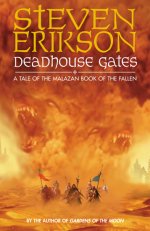 10/
10/ 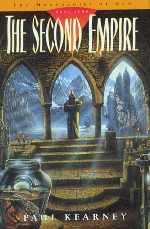

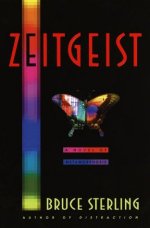
 7/
7/ 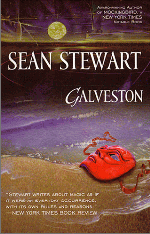


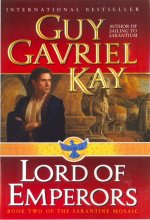 3/
3/ 
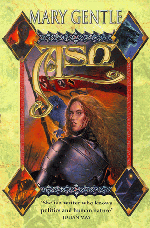 1/
1/ 